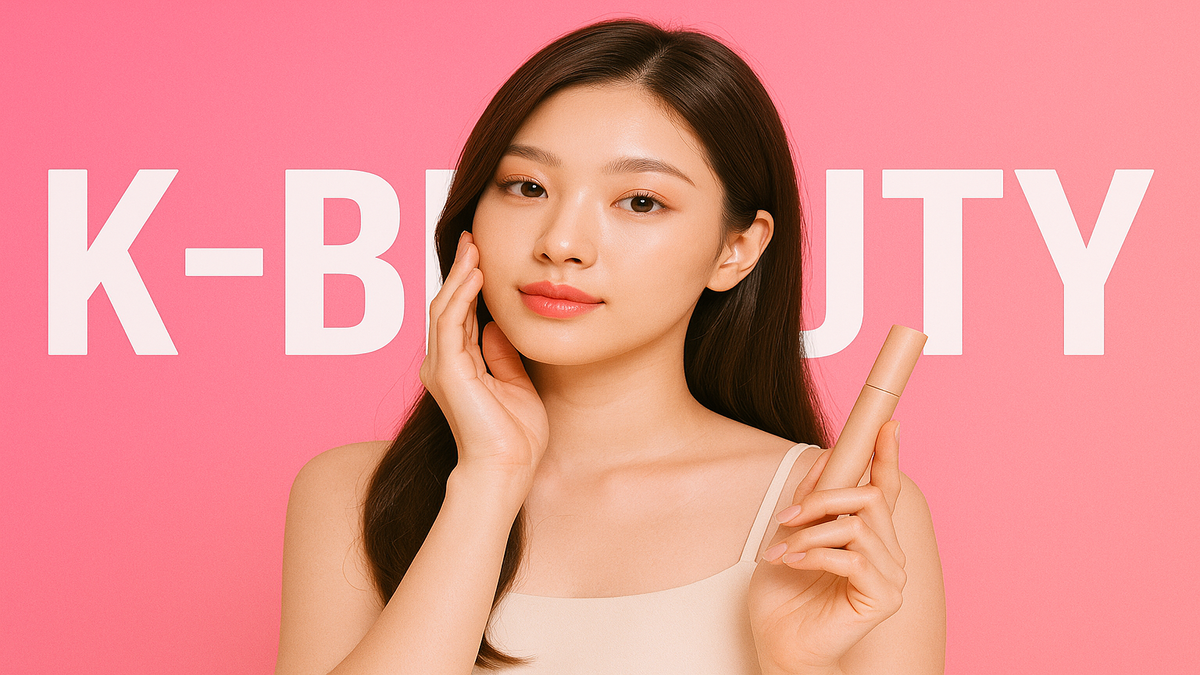[K-Bridge/Samuel] The Rise of Sustainable K-Beauty: Clean, Green & Ethical is a transformative movement within the beauty industry, particularly in South Korea.
This trend emphasizes the importance of using clean, eco-friendly ingredients and ethical practices in product formulation and manufacturing.
As consumers become more environmentally conscious, brands are responding by adopting sustainable practices that not only benefit the planet but also enhance the overall quality of their products.
The focus on sustainability in K-Beauty reflects a broader cultural shift towards mindfulness and responsibility in consumer choices.
By reading this article, you will gain insights into the principles of sustainable K-Beauty, its impact on the industry, and how it aligns with consumer values.
Understanding the Principles of Sustainable K-Beauty: Clean, Green & Ethical
Sustainable K-Beauty is founded on three core principles: clean, green, and ethical.
Clean beauty refers to products that are free from harmful chemicals and toxins, ensuring they are safe for both the user and the environment.
This movement encourages brands to formulate products with natural ingredients that are gentle on the skin while still being effective.
The shift towards clean beauty is driven by consumers’ increasing awareness of the potential dangers associated with synthetic additives, prompting brands to reassess their ingredient lists and prioritize transparency.
Green beauty emphasizes the environmental impact of beauty products.
This principle involves using sustainably sourced ingredients and eco-friendly packaging.
Brands are increasingly opting for biodegradable or recyclable materials, reducing their carbon footprint and waste.
By adopting green practices, companies not only appeal to environmentally conscious consumers but also contribute to the preservation of natural resources.
This shift is essential in combating the beauty industry’s historical contribution to pollution and waste.
Ethical beauty involves fair labor practices and cruelty-free testing.
This principle ensures that products are not tested on animals and that workers involved in the production process are treated fairly and paid justly.
By prioritizing ethical standards, brands can build trust with consumers who are increasingly concerned about the social implications of their purchases.
The rise of sustainable K-Beauty reflects a growing demand for products that align with personal values, fostering a deeper connection between consumers and brands.
The Impact of Sustainable K-Beauty on Consumer Choices
As consumers become more informed about the environmental and ethical implications of their purchases, their choices are shifting towards sustainable K-Beauty products.
This change is evident in the increasing popularity of brands that prioritize clean, green, and ethical practices.
Consumers are now more likely to research ingredients and seek out certifications that validate a brand’s commitment to sustainability.
This trend has led to a surge in demand for products that not only enhance beauty but also contribute positively to the planet.
The impact of sustainable K-Beauty on consumer choices is also reflected in the rise of social media influencers and beauty bloggers who advocate for eco-friendly products.
These individuals play a crucial role in educating their followers about the benefits of sustainable beauty and the importance of making conscious choices.
Their influence has helped to create a community of like-minded individuals who prioritize sustainability in their beauty routines.
This shift is further amplified by the power of social media, where consumers share their experiences and recommendations, creating a ripple effect in the beauty industry.
Moreover, the demand for sustainable K-Beauty has prompted traditional brands to rethink their strategies.
Many established companies are now investing in research and development to create eco-friendly alternatives to their existing products.
This shift not only helps them retain their customer base but also attracts new consumers who are seeking sustainable options.
The competitive landscape of the beauty industry is evolving, with sustainability becoming a key differentiator for brands striving to stay relevant in an increasingly conscious market.
Innovations in Sustainable K-Beauty Ingredients
The rise of sustainable K-Beauty has led to innovative developments in ingredient sourcing and formulation.
Brands are now prioritizing natural and organic ingredients that are not only effective but also environmentally friendly.
This shift has resulted in the exploration of unique botanicals and plant extracts that are native to Korea, showcasing the country’s rich biodiversity.
These ingredients often possess beneficial properties that enhance skin health while minimizing the ecological impact of sourcing.
Additionally, sustainable K-Beauty brands are increasingly utilizing biotechnological advancements to create eco-friendly alternatives to synthetic ingredients.
These innovations allow for the production of high-quality ingredients without the environmental burden associated with traditional manufacturing processes.
For instance, fermentation technology is being employed to enhance the efficacy of natural ingredients, resulting in products that deliver exceptional results without compromising sustainability.
Furthermore, the trend towards sustainability has led to greater collaboration between brands and local farmers.
By sourcing ingredients directly from farmers, brands can ensure ethical practices while supporting local economies.
This approach not only enhances the quality of the ingredients but also fosters a sense of community and accountability within the supply chain.
As a result, consumers can feel confident that their purchases are contributing to a more sustainable and equitable beauty industry.
The Role of Packaging in Sustainable K-Beauty
Packaging plays a crucial role in the sustainability of K-Beauty products.
The traditional beauty industry has long been criticized for its excessive use of plastic and non-recyclable materials.
However, the rise of sustainable K-Beauty has prompted brands to rethink their packaging strategies.
Many companies are now opting for minimalistic designs that reduce waste while maintaining functionality.
This shift not only appeals to eco-conscious consumers but also reflects a broader trend towards simplicity and authenticity in branding.
Innovative packaging solutions are also emerging within the sustainable K-Beauty sector.
Brands are exploring biodegradable materials and refillable options that minimize environmental impact.
For instance, some companies have introduced reusable containers that encourage consumers to repurchase products without the need for additional packaging.
This approach not only reduces waste but also fosters a sense of loyalty and commitment among consumers who appreciate the brand’s dedication to sustainability.
Moreover, the transparency of packaging is becoming increasingly important in the sustainable K-Beauty movement.
Brands are now providing clear information about the materials used in their packaging and the steps taken to ensure sustainability.
This transparency allows consumers to make informed choices and fosters trust between brands and their customers.
As consumers become more aware of the environmental implications of packaging, brands that prioritize sustainability will likely gain a competitive edge in the market.
Challenges Facing Sustainable K-Beauty Brands
Despite the positive momentum of sustainable K-Beauty, brands face several challenges in their pursuit of clean, green, and ethical practices.
One significant hurdle is the higher cost associated with sourcing sustainable ingredients and materials.
Many brands struggle to balance affordability with sustainability, as eco-friendly options often come at a premium.
This challenge can limit access to sustainable products for budget-conscious consumers, hindering the widespread adoption of sustainable beauty practices.
Additionally, the beauty industry is rife with greenwashing, where brands falsely claim to be sustainable without implementing genuine practices.
This phenomenon can confuse consumers and undermine the credibility of truly sustainable brands.
To combat this issue, it is essential for consumers to educate themselves about what constitutes sustainable practices and to support brands that prioritize transparency and accountability.
Another challenge is the limited availability of sustainable ingredients.
As demand for eco-friendly products grows, brands may face difficulties in sourcing high-quality, sustainable materials.
This scarcity can lead to increased competition among brands and may hinder the ability of smaller companies to thrive in the market.
To address this challenge, collaboration between brands, suppliers, and local farmers is essential to create a more sustainable supply chain that benefits all stakeholders involved.
Consumer Education and Awareness in Sustainable K-Beauty
Consumer education plays a vital role in the rise of sustainable K-Beauty.
As consumers become more aware of the environmental and ethical implications of their purchases, their demand for sustainable products increases.
Brands that prioritize education and transparency can foster a loyal customer base that values sustainability.
This shift has led to the emergence of various platforms dedicated to educating consumers about sustainable practices in the beauty industry.
Social media has become a powerful tool for raising awareness about sustainable K-Beauty.
Influencers and beauty advocates are using their platforms to share informative content about clean ingredients, eco-friendly practices, and ethical brands.
This grassroots movement has empowered consumers to make informed choices and encourages them to hold brands accountable for their sustainability claims.
As a result, consumers are increasingly seeking out products that align with their values and contribute positively to the environment.
Furthermore, educational initiatives within the beauty industry are essential for promoting sustainable practices.
Workshops, webinars, and online courses focused on sustainability in beauty can equip consumers with the knowledge needed to make conscious choices.
By fostering a culture of awareness and responsibility, the beauty industry can drive meaningful change that benefits both consumers and the planet.
As more consumers prioritize sustainability, brands that embrace these values will likely thrive in the evolving market landscape.
The Future of Sustainable K-Beauty: Trends and Predictions
The future of sustainable K-Beauty appears promising as the movement continues to gain momentum.
As consumer awareness and demand for eco-friendly products increase, brands are expected to innovate and adapt to meet these expectations.
One notable trend is the rise of personalized beauty solutions that incorporate sustainable practices.
Brands are increasingly leveraging technology to create customized products that cater to individual needs while prioritizing sustainability.
Additionally, the integration of technology in sustainable K-Beauty is likely to expand.
From virtual consultations to augmented reality experiences, brands are exploring new ways to engage consumers and promote their sustainable offerings.
This technological advancement not only enhances the shopping experience but also allows brands to educate consumers about their sustainable practices in an engaging manner.
Moreover, the collaboration between beauty brands and environmental organizations is expected to grow.
Partnerships that focus on sustainability initiatives can amplify the impact of both parties, creating a more significant movement towards eco-friendly beauty.
As brands work together to address environmental challenges, consumers can feel confident that their choices contribute to a larger purpose.
The future of sustainable K-Beauty is bright, with the potential for innovation, collaboration, and meaningful change within the beauty industry.








